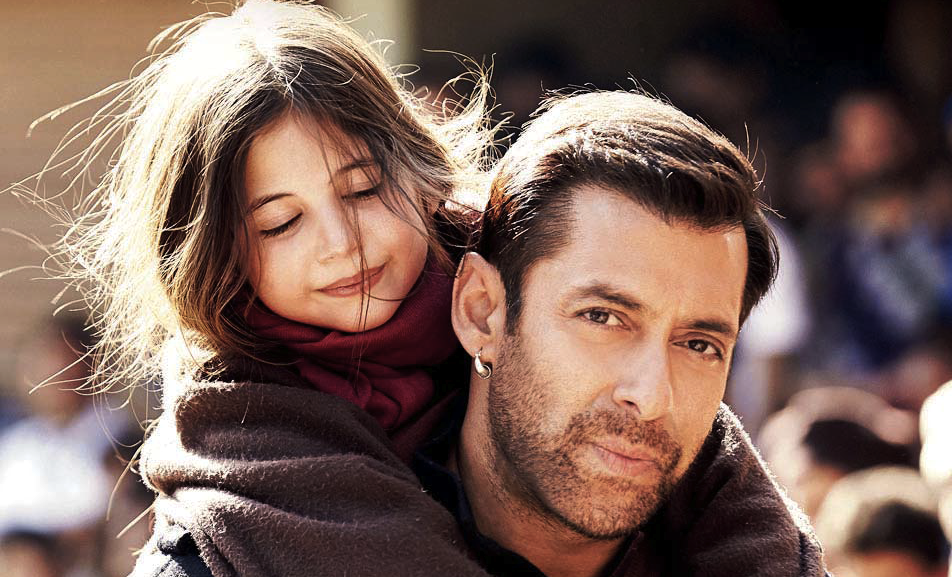Much like you’d find in a Rajkumar Hirani film, Bajrangi Bhaijaan addresses matters of secularism, Kashmir, and the India-Pakistan conflict with a simplistic thought.
The world of Bajrangi Bhaijaan is populated primarily by good, decent, honest people. The few bad folks are not really bad. They are more comedic than evil, bumbling rather than conniving, and eventually give way to their inherent goodness. This means there are no real enemies. And therefore, there is no real conflict. Leading to the point that the Kashmir issue and the larger India-Pakistan conflict really have no reason to exist at all. It’s a matter of people seeing the folly of their ways, and coming together.
Which, to be perfectly honest, is a fair perspective, though a very simplified one.
This is the essential theme of Kabir Khan’s Bajrangi Bhaijaan. Having established this universe, he faithfully sticks to its tenets. The story follows a simpleton played by Salman Khan, who finds a Pakistani speech impaired girl left behind inadvertently by her mother during their visit to a dargah in India. In his bid to return her home, we meet a motely set of characters who aid both his journey and the story. Along the way, Bajrangi wins hearts galore and also learns a thing or two himself, all the while reducing the Indo-Pak issue to an emotional one rather than a political one.
I particularly enjoyed some of the lighter moments of the film. Bajrangi is a devout Hanuman bhakt and strictly vegetarian, but is forced to “accept” the fact that his little girl is a non-vegetarian Muslim. This is done without any great denouement, and is dealt with humor and a lightness of hand that makes it work. Om Puri gently telling him that “Kuch Kashmir Yahaan Bhi Hai” is all deftness and dignity. Given the theme, it is creditable that the film by and large eschews jingoism and overt preaching.
Nawazuddin Siddiqui’s Chand Nawab gives the film an edge just when you might feel a little overwhelmed with the fluff. He plays a canny but struggling small time reporter waiting for a big story to break. His performance contrasts with that of Salman Khan’s almost child like take on the role of Bajrangi, and provides a spark of reality to the film.
The child actor Harshaali is immensely natural, and has a very likebable presence in the film. She plays a speech impaired girl, and perhaps it helps that she does not need to rely on dialogue which could have forced her to act. The challenges of working with child actors is a known fact, and for Kabir Khan and his team to have extracted this performance is a win for the film.
The film is also a road trip of sorts, and the traveler in Kabir Khan comes alive in Aseem Mishra’s frames. The parts of the film meant to be in Pakistan and Pakistan occupied Kashmir are noteworthy, and put together with a solid job by the production design team, convincingly pull off the visual background against which the film travels.
Much like you’d find in a Rajkumar Hirani film, Bajrangi Bhaijaan addresses matters of secularism, Kashmir, and the India-Pakistan conflict with a simplistic thought. This is like cartoon films for children. It is in fact not inconceivable that Salman Khan’s Bajrangi can spawn an industry akin to the popular Chota Bheem character, and this could just be the first in a series of “The Adventures of Bajrangi Bhaijaan”.
It does not ask to be taken as a serious solution to the issue. It is the ultimate representation of the popular Bollywood adage – entertainment with a message – and wears this badge proudly. To this end, it establishes a connect with the audience, and more than achieves the goals the filmmakers would have set for the film. Beyond this, it does not invite or merit any deeper analysis, either as a film or as a social commentary.
Hindi, Drama, Comedy, Color
https://youtu.be/vyX4toD395U



There is nothing better than reading a review which looks at a film in the context in which it is made and doesn’t blindly apply film theories. Well expressed. miss the Upperstall percentage of late though.
Thanks Sharad. The Upperstall percentage is actually at the end of the review as a red bar (just above the trailer). Maybe we need to re-look where we place it, if you have been missing it.